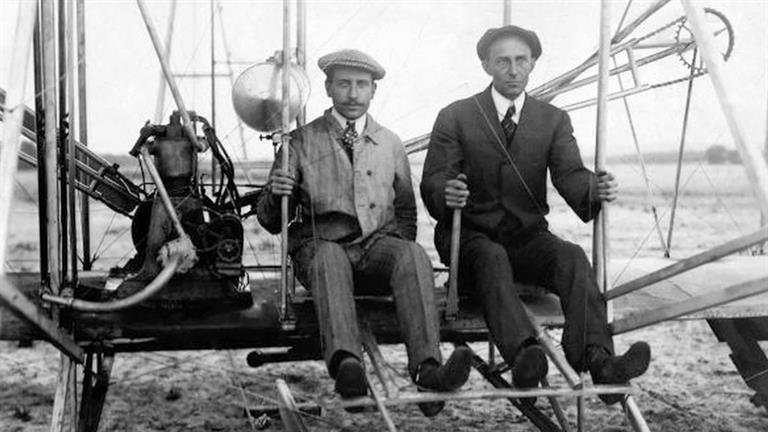The Wright Brothers by David McCullough (Book Review)
A few years ago, I got to walk the stretch of land in Kitty Hawk, North Carolina where the Wright brothers tested the early versions of their flying machine. A few years after that, I got to see the actual machine at the Smithsonian is Washington D.C. It wasn’t until after that that I read The Wright Brothers by David McCullough.
This is the second book by David McCullough that I have read, the first being 1776. That book seemed to read much more like a historical text book than this one. The Wright Brothers seems much easier to follow since there are fewer character arcs and places to follow in the book. It’s much more narrative driven making it a more easy and entertaining read.
The story of these two brothers is something that I’ve been familiar with since I was a child, but the usual level of detail covered by McCullough made the story seem altogether new, which was definitely worth it.
It was interesting as a pastor to learn that the brothers were the sons of a preacher. McCullough doesn’t really provide much of Bishop Wrights character arc because the book wasn’t about him obviously, but it left me curious what he was like.
McCullough does a great job using historical documentation, i.e. personal letters, newspaper articles, scientific and engineering journals, and more to bring out the personalities of each character. The way that people wrote in those days certainly seems different than today. You really feel the person coming to life. In those days, the frequency with which people wrote letters is a reminder to me of the overabundance of communication methods today which has made correspondence today seem disposable. In those days it seems they saved everything. I often wonder if people saved personal letters for the sake of posterity knowing historians would use them. My text message threads auto-delete after thirty days!
I was fascinated to learn just how quickly the history of aviation took off (see what I did there?). From the outset, the brothers were as meticulous as modern day engineers are about everything. We often think that historical figures just weren’t as intelligent as we are today and I’m not sure why. Their process of developing their machine was quite fascinating. By the end of their lifetime, others were successfully using their work to develop planes as well. People were flying at nearly three thousand feet at their highest, the machines were much more maneuverable than I’d thought, and they could stay aloft and travel farther than I expected. I was also unaware of just how many places they brought their machine for demonstrations. They made more than one trip to several locations in Europe including France and England, and in the U.S., Washington D.C. and New York city. At one point, they even flew their machine around the Statue of Liberty and up the Hudson River.
It’s hard to imagine a world before airplanes. Every day we can look up and likely see one ferrying people somewhere. Human flight seems so normal now, yet in McCullough’s book we get to witness the reactions of people to seeing a man fly in something for the first time.
It’s definitely a worthy read. As technically detailed and historical as the book gets, I think it is still an attainable read even for children. It’s engaging the whole time.
This article was transferred from my previous site. Here are what others said at the time of the original writing…
“I love McCullough's books! One of my favorites was The Great Bridge, about the building of the Brooklyn Bridge.” — Nathan

